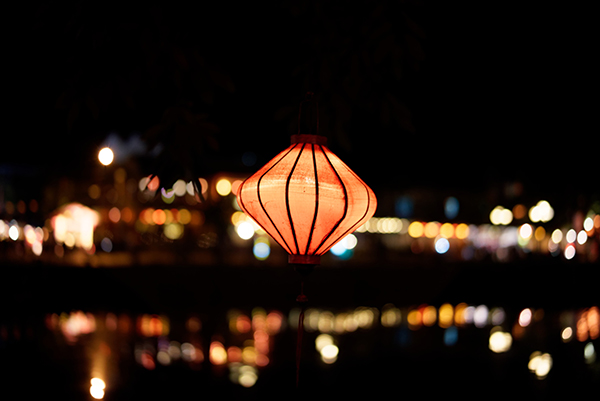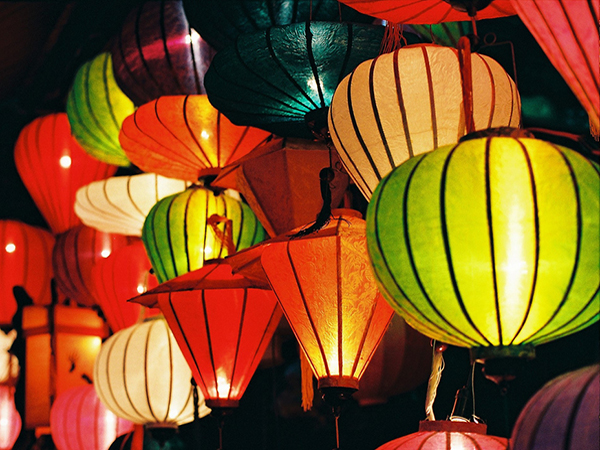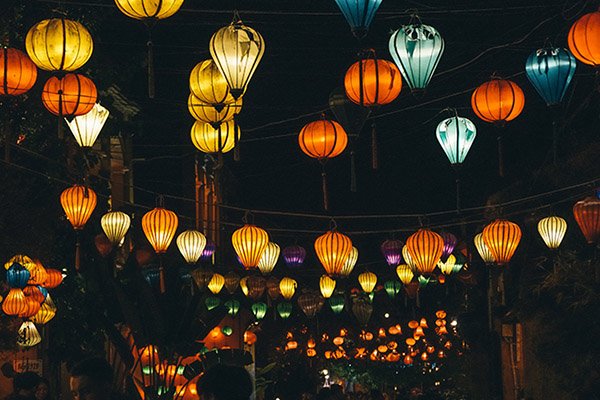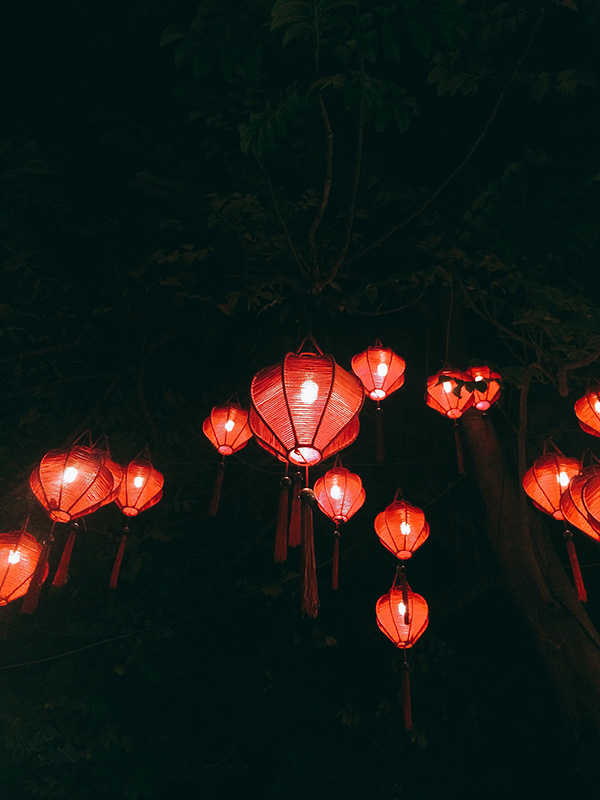Hoi An, a sparkling old street downstream of the Thu Bon River, is famous for its ancient architecture brought by the Chinese and Japanese from centuries ago. Hoi An, once a former world-class trading port, witnessed the close interaction between merchants from many different countries. And from that relationship emerged a wonderful creation called “lantern”.
The origin of Hoi An Lanterns
The history of the Hoi An lanterns dates back to several hundred years ago, when there was a famous trading port named Faifo (Hai Pho). At that time, Chinese and Japanese merchants came here to exchange business and started their career. People carrying the surname of Chau, Luo, Thai to Chaozhou, Fujian, Guangdong in China brought along lanterns. They hung these lanterns in front of their homes as signature decorations.
Many old people in Hoi An affirm the current Hoi An lantern is a very unique feature created by themselves. But the fact that Hoi An lanterns originally came from Chinese is validated.

(Photo: Vincent Guth/ Unsplash)
In the past, lanterns were made primarily of large lanterns, military lanterns. But exclusively for the rich because for ordinary people, it was really hard to afford. After that, local people learned and started making lanterns themselves, mainly for decoration in the house.
According to records, circa 206 BC to the 25th year AD is the flourishing period of Buddhism. From temples, the monks light the lanterns on the full moon night. Then a king brought the custom of lighting this lantern to the king’s palace. Lantern festival from there spread out to local people. In Hoi An, hanging lanterns in front of the house on holidays has become a custom for a long time. But not yet forming a whole street like today.

So far, no one knows exactly when Hoi An lanterns came into being. The question of who was the first to make a lantern remains unanswered. But whoever it is, Hoi An lanterns still shine and have spread widely to the world. Some people believe that the lanterns present in Hoi An were brought by Chaozhou, Fujian and Guangdong people from China. It is hanged in front of the house to help remember the homeland.
On New Year days or festivals, the wealthy people in Hoi An have a big lantern writing Han characters or painting ink paintings hanging in front of the house. Over several generations, new lanterns reached every home in the ancient town of Hoi An with a simple decoration but still retain the inherent beauty and elegance. Every summer, people make lamps to decorate the family and then sell them. Making lanterns has become a unique profession of Hoi An.

(Photo: Steven Wilcox/Unsplash)
What to know about the lanterns that light up a Hoi An soul today
The Habit of Hanging Lanterns
Hanging lanterns has been a cultural characteristic of Vietnamese people since ancient times. Lanterns are often held vigorously on Tet holidays, particularly New Year’s Eve and Mid-Autumn Festival. According to the researchers, the symbolic meaning of the lamp is associated with the meaning of light. Offering a lamp to an altar also means making a dedication, placing yourself under the protection of the invisible and the gods.
How To Make Lanterns
Located inside the old streets, a handicraft still remains, demonstrating the traces of time that have never been forgotten. That is the craft of making lanterns. Speaking of lanterns, the first thing to mention is the bamboo sticks. Bamboo making lanterns is a kind of fresh old bamboo, available in Vietnamese countryside. To ensure durability and avoid termites, people must cook bamboo and brine for 10 days and then dried, turned into nan, thin thickness, size, depending on the type of lamp.

(Photo: Linh Dao/Unsplash)
Bamboo sticks are then attached to two specially designed wooden or iron rings, to shape the frame according to the shape of the lamp. Often the stage of choosing the nan will affect the shape of the lamp, because the better the nan can handle, the more flexibly the workman can create the desired shape without the broken bamboo. After that, the mechanic will skillfully connect the spokes with an umbrella, creating lamp bones.
Next is stitching cloth into lanterns. Cloths are cut into many parts, different shapes, then glued to the lamp frame with glue. The fabric used for lanterns is usually rub or silk, the type and color of the cloth determines the brightness of the lamp. Hoi An people often use silk fabric more because the light from the silk lanterns will be more fanciful and vivid.
Then sometimes, the craftsman also creates paintings on the lantern. The strokes on the lanterns may be just simple decorative motifs, but may also be a familiar small scene of Vietnamese villages. Painting on lanterns is a meticulous process and requires a lot of care, the coloring and mixing ratio also determine the beauty and satisfaction of the mental children of the craftsman – artisan multiply.
How can tourists experience the “lantern culture” in Hoi An?
Most simply, you can own one. The lantern is a signature souvenir of Hoi An and can easily be bought almost everywhere in the town. Usually during their night walk, visitors would buy them at their best – perfectly lightened, then take them home as gifts.
If you seek for a deeper cultural experience, try making one. There are many one-day course of lantern making where you put your own fingers into creating this masterpiece. Just ask your local accommodation host and you will get the instructions to this experience.
For long lasting memory, don’t forget to take pictures with them. Lanterns in Hoi An are displayed all along the road, making it a spectacularly beautiful scene. Local retailers here are so friendly and generous with photo taking. But if possible, supporting them by purchasing some small souvenirs or buying the lantern themselves.
Lanterns have become an integral part of the culture of the people here. The light from the dim lights makes Hoi An ancient architecture put on a mysterious coat. In the stillness, the lantern has become an indispensable part of the old town.





Comments